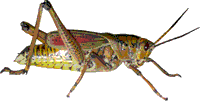Entomology Collections, General

Entomology Papers from Other Sources
Document Type
Article
Date of this Version
3-1981
Citation
Florida Entomologist 64 (1), March 1981, p. 192.
Abstract
Most entomologists are aware of ants that take sugar-rich honeydew from the anus of aphids; however, similar relationships exist between various Homoptera and other insects (Wilson 1971. Page 394 in The Insect Societies). Stingless bees (Trigona) have occasionally been associated with membracid treehoppers in Brazil (Laroca and Sakakibara 1976. Rev. Bras. Ent. 20(2): 71-2 and refs.), Colombia, and Panama (Salt 1929. Trans. Ent. Soc. Lond. 77: 431-68). Apparently similar relationships have not been reported from Central America. In Tikal, Guatemala, on 23 August 1976 at 4:00 p.m. I observed membracids, Antianthle expansa (Germar), on large shrubs on both sides of a dirt road. On one plant, ca. 50 bright red nymphs and 3 green adults were on the stem 6 cm below the terminal bud as well as on the petiole and midrib of a leaf connected to the stem at this point. Six stingless bees, Trigona amalthiea (Oliv.), were associated with this group. On another plant, more than 100 membracids completely covered the stem for a length of 18 cm, beginning 15 cm from the terminal bud. Only nymphs were present in the upper 7 cm of the group. Two bees were associated with these. On a different branch of the same plant, ca. 20 cm from the terminal bud were approximately 40 nymphs and 7 adults of A. expansa tended by ants (Crematogaster sp.). At least 3 individuals of T. amalthea were also associated with this group.


Comments
Copyright Jack Schuster.